Normally a project manager is expected to have firm control over project timeline and costs. For controlling the project timeline, a planned timeline first needs to be set.
This is achieved by creating a project schedule. An important way to create a project schedule is by identifying critical activities and managing this critical path to meet desired project delivery date.
Critical path management or CPM is a well known project scheduling method and very popular with planning engineers and project managers.
But solely relying on critical path management cannot guarantee that project will finish on time.
There are some other factors at play. Let’s dig a little deeper to see what they are.
Critical path and dependency relationships
In simple terms, a critical path is a sequence of all those activities which can delay the whole project if they face any delay at all.
For identifying these critical activities, different tasks should be first linked together by the means of their inter-dependency relationships to create chains of tasks.
Then check if there is any wiggle room (known as “float”) in each of these chains of activities.
Wherever there is zero float, those chains have no wiggle room. Any delay in any of the tasks in that chain will result in the overall project getting delayed.
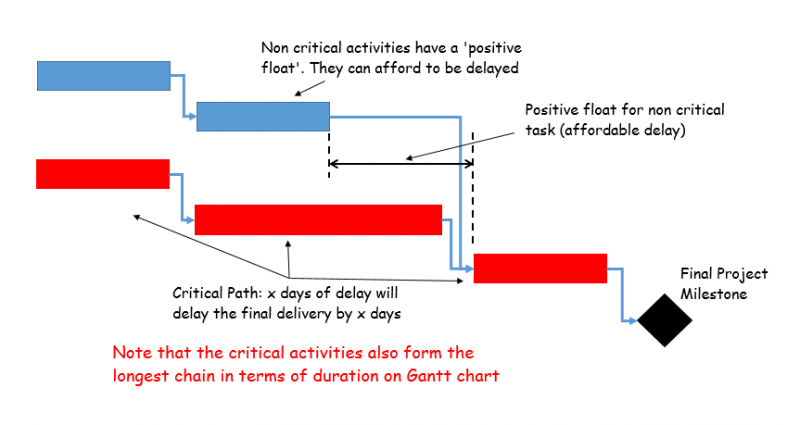
For example, in the image above the critical activities are highlighted in red color. If any of these red activities get delayed by 1 day, the final project milestone will also get delayed by 1 day.
So the critical path management (CPM) method identifies such activities which have a direct impact on project end date via their dependency relationships.
All critical tasks are not equally critical
Consider the example with 5 interlinked tasks in a critical path chain.
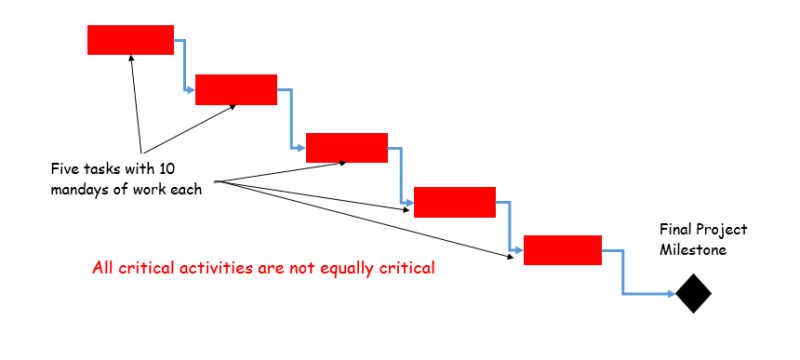
Critical path management (CPM) will say all of the 5 tasks are critical. But it does not speak about the ‘criticality’ of each task.
If the first task gets delayed by one day, it will jeopardize following 4 tasks. Whereas, the 5th task only risks delaying itself.
Does it not seem like a big difference?
Let’s look at it from the perspective of the quantum of work. Let’s say each of those 5 tasks is 10 mandays of work.
In that case, any delay in the first task can potentially derail 50 mandays of work. Any delay in the 5th task can derail 10 mandays of work.
Amount of work can impact schedule as well
The impact of the scope of work or amount of work in creating and managing project schedule is more pronounced when you consider 2 independent chains of tasks forming 2 critical paths.
Consider the following example –
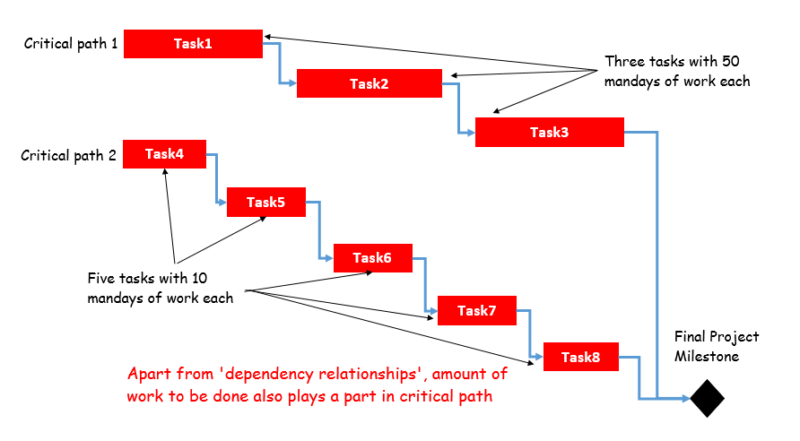
There are 3 tasks in chain 1 with 50 mandays of work in each task. So a total of 150 mandays of work is to be done in chain 1.
And there are 5 tasks in chain 2 with 10 mandays of work in each task, totaling to 50 mandays in chain 2.
So when the project starts which of the tasks is more critical – task 1 or task 4?
When you consider that any delay in task 1 will jeopardize timeline of 150 mandays of work Vs task 4 impacting 50 mandays of work, it becomes obvious that task 1 should be prioritized.
However, when you schedule your project with critical path method both tasks will be marked equally critical.
Hence it is important to go a step ahead and dig deeper into the amount of work that any critical activity is going to impact. This will help you to prioritize activities more accurately.
Any tools that can help?
Almost all traditional scheduling tools rely on the critical path method to generate a project Gantt chart.
This Gantt chart which is usually missing the information about the amount of work to be done in different activities has to be connected to a ‘Task List’ where other relevant details of each task are captured such as – scope of work (SOW), assigned resources, stakeholders etc.
WorkPack is such a tool that can help you connect project schedule with – spreadsheets, emails, documents etc.
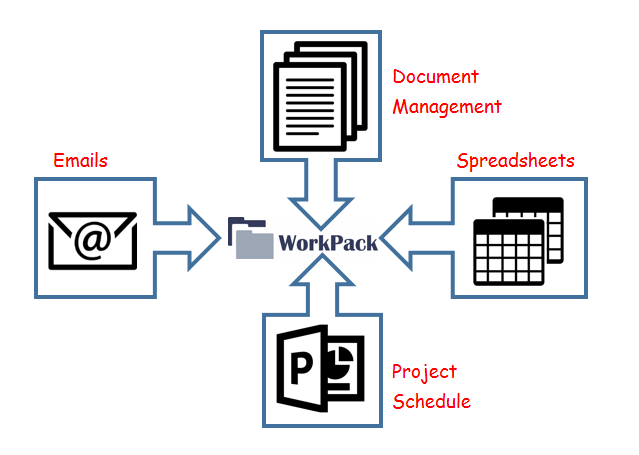
You can use the WorkPack spreadsheets to capture your project task list along with the scope of work or amount of work (listed with proper units).
This will help you bring all the important information on one single platform, which can then be used to understand the criticality of different activities and prioritize them accordingly.
WorkPack has already helped many engineering and construction teams to streamline their project controls in this way.
Can it help your team as well? Find out by creating a free trial account on WorkPack. Let us know if you need any help to set it up or if you would like to see a live demo.

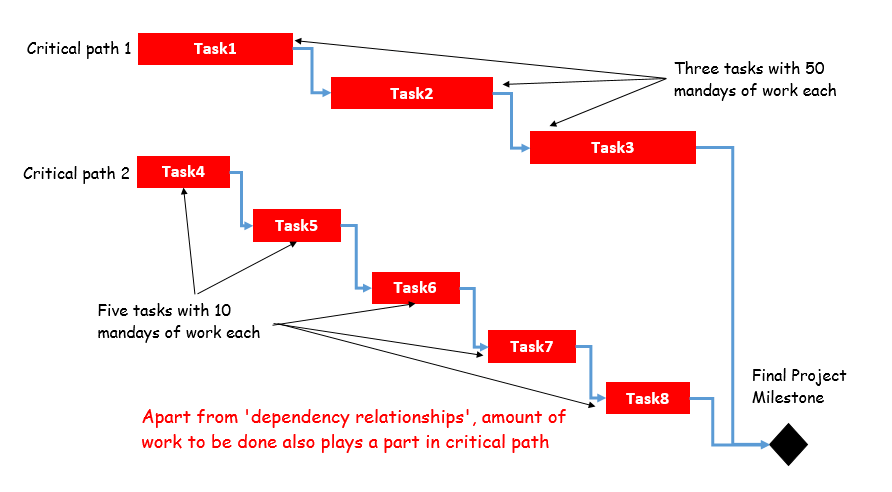
No Comments